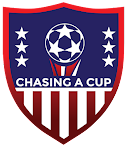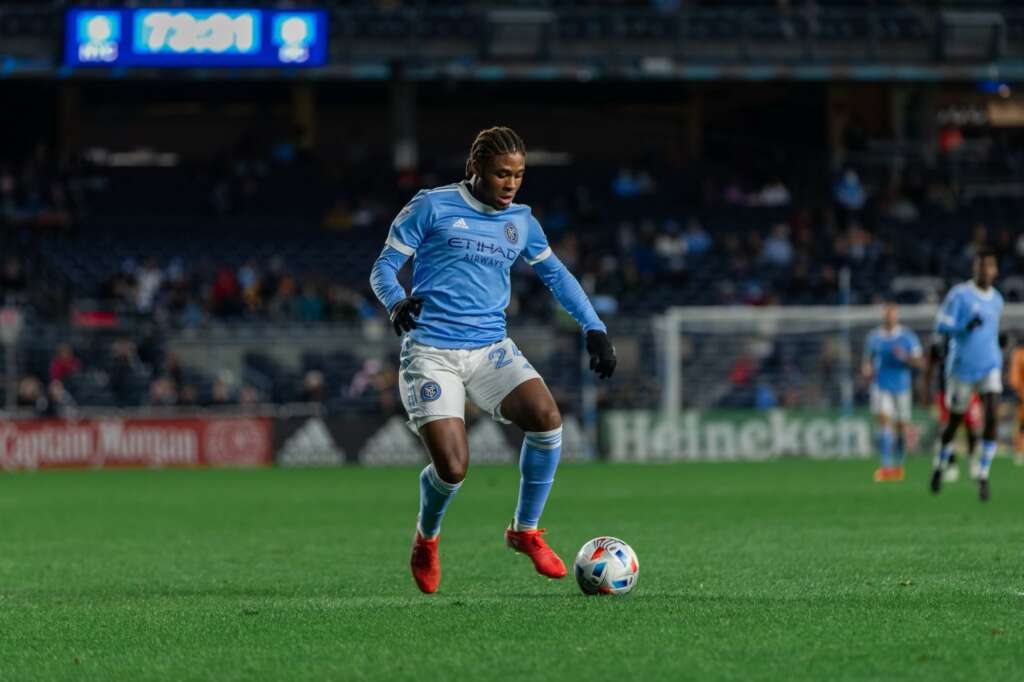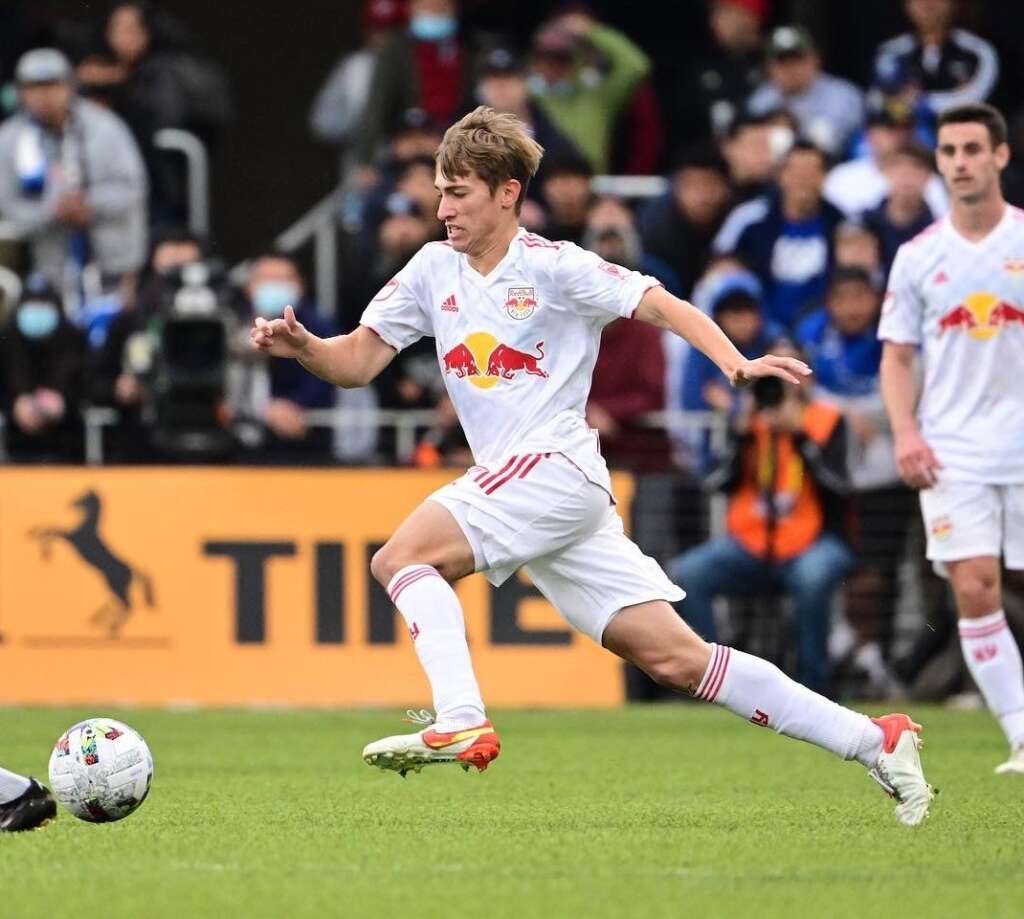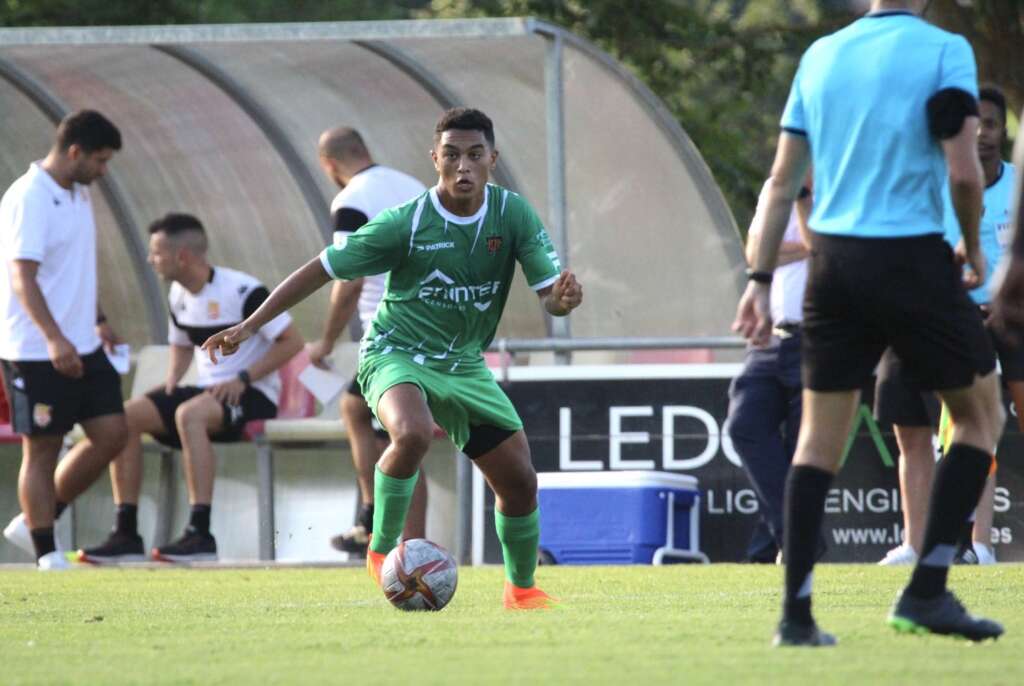

Youth
Everything you need to know about the U.S. youth camps this September
Published
2 years agoon
It’s full steam ahead for the U.S. Youth National Teams; with big tournaments on the horizon in 2023, the U-20, U-19, and U-17 teams are now in preparation mode. All three teams have friendly tournaments this week against strong opponents. Here’s what you need to know about them!
U-20: Revelations Cup
The U-20 Men’s National Team turned many heads around the region with the way in which they totally dominated the CONCACAF Under-20 Championship this past summer. The U.S. made a massive statement in waltzing through the knockout rounds without conceding a goal, including big wins over Costa Rica, Honduras, and the Dominican Republic. In doing so they qualified for the 2023 U-20 World Cup, and now Mikey Varas’ team is focused on that competition in Indonesia next spring.
Who will the U.S. play?
The U.S. will face three opponents in the Revelations Cup, which is organized by the Mexican Football Federation (FMF). They will take on the host, old rivals Mexico, who failed to qualify for the U-20 World Cup, as well as CONMEBOL nations Peru and Paraguay, who are preparing for their own World Cup qualifiers in the coming months.
USA vs. Peru – September 21st at 5 PM ET
USA vs. Mexico – September 24th at 7 PM ET
USA vs. Paraguay – September 27th at 10 PM ET
Who should I keep an eye on?
Essentially the full team that won the CONCACAF U-20 Championship is returning for this camp, but a few top names have been reinserted into the team.
Jonathan Gómez (‘03) – The most important addition to this group from a long-term perspective is Mexican-American dual national Jonathan Gómez. JoGo has appeared for both senior national teams in the past and is one of the top dual national prospects at the moment. This will be his first appearance for the U.S. in this U-20 cycle, and he will be able to make a huge impact at the left-back position for this team.
Kevin Paredes (‘03) – A dynamic and versatile player, Kevin Paredes missed the games over the summer as he remained with Wolfsburg for preseason. While he is yet to make a big impact at the club level, Paredes could be a true star for this team in the attacking wide positions. The Virginia native is arguably the most talented player in this group.
Brian Gutiérrez (‘03) – Gutiérrez was not released for the national team by his club, the Chicago Fire, this summer. However, he has earned the starting job in MLS and can push Quinn Sullivan to start for the U-20s as well. Guti has immense talent, and while Sullivan was a top 3 performer in Honduras this summer, his spot in the XI is not guaranteed.
Justin Che (‘03) – It remains to be seen whether Justin Che will fit in as a center-back or a right-back, but either way he is one of the best American defensive prospects. A possible captain for the U-20s, Che will bring defensive stability and passing that was lacking in the summer, and his addition is arguably the most important from a results perspective.
Jack McGlynn (‘03) – Unlike the other four players featured, McGlynn was at the CONCACAF Championship in Honduras last summer. However, since then, he has been an incredible success story for the Union and has dramatically outperformed Paxten Aaronson and Quinn Sullivan this year. McGlynn has earned 7 starts in a stacked Union team this season and has been an impact player. The central midfielder with a phenomenal left foot was voted ahead of Aaronson and Sullivan on MLS’ 22 Under 22 list this week.
How can I watch it?
The Revelations Cup will be streamed on VIX, and should be available for free.
——————————————————————————————————————————-
U-19: Slovenia Nations Cup
The U-19 group is comprised of 2005 and lower-end 2004 players. While there is no World Cup in this age group, it is an important resource to keep players in the program and build depth for the U-20 team. Marko Mitrović’s group has had some impressive wins over European opposition so far in this cycle, including wins over England and Norway.
Who will the U.S. play?
The U.S. will take on Malta, Croatia, and Scotland in this competition. While these are certainly not the toughest opponents, they will still provide a good opportunity for the coaches to see these players up close and keep them involved with the program. The matches will all be played in Slovenia.
USA vs. Malta – September 21st at 1 PM ET
USA vs. Croatia – September 23rd at 1 PM ET
USA vs. Scotland – September 26th at 11 AM ET
Who should I keep an eye on?
Rodrigo Neri (‘05) – The one position in which the U.S. pool is almost completely barren in every youth national team age group is the #9, and Atlético Madrid’s Neri provides one possible solution. He was the star of the camp in June, scoring against both England and Norway. Neri has trained with Atléti’s first team and is a natural finisher.
Sergio Oregel Jr. (‘05) – Though yet to debut in MLS, Oregel has quietly emerged as a strong prospect amidst a crowded midfield class for the 05s. A dynamic, creative midfielder who can play anywhere in the midfield 3, the Mexican-American dual national scored against Norway in June and has been one of the top performers for Chicago Fire II in MLS Next Pro. Oregel is often slept on, but he is absolutely one to watch.
Owen Wolff (‘04) – Austin FC’s Owen Wolff broke out with Austin FC this season and could prove to be a player who has a shot at making the U-20 World Cup team next season. Born a mere two days before the age cutoff which would make him eligible for the next U-20 cycle, Wolff had 23 appearances this season and is one of many midfielders who will provide a selection headache for any youth national team coach.
Josh Wynder (‘05) – Wynder is one of the top center-back prospects in the whole pipeline, and if he continues his current trajectory, he should make the U-20 World Cup squad playing up a cycle. Despite only turning 17 during the spring, Wynder has made 18 appearances this season for Louisville City, scoring once and locking down the starting job for one of the leading teams in USL. He has been linked with a move to Europe or MLS, with Sporting CP and the Philadelphia Union among the possible suitors.
Reed Baker-Whiting (‘05) – Baker-Whiting’s star has someone faded in the last few months as he has struggled to break into the Sounders’ midfield rotation, but he is still a tremendously talented prospect. Interestingly, he was listed as a defender on this roster, insinuating that he could play as a fullback during this camp.
How can I watch it?
The matches will all be streamed on Facebook.
——————————————————————————————————————————-
U-17: Vaclav Jezek Tournament
The U-17s will have by far the biggest test out of all of the youth teams. The group is comprised almost entirely of 2006s, with one 2007, and are preparing for the CONCACAF U-17 Championship which will be held in Guatemala this winter. The Jezek Tournament is a U-18 tournament, though, so every other team in the competition is comprised of players born in 2005; the U-17s are effectively playing an age group up. While this will be a tremendous test and will be a great challenge for them, there is no reason to believe they can’t rise to it when one considers the way in which they totally dismantled Belgium and Portugal earlier this year.
Who will the U.S. play?
The U-17s will face Slovakia, Germany, and Czechia in this event, which will be held in Czechia. As mentioned previously, all three of those teams are sending their U-18 squads, so the Germany test, in particular, will be an interesting spectacle.
USA vs Slovakia – September 21st at 5 AM ET
USA vs Germany – September 23rd at 10 AM ET
USA vs Czechia – September 25th at 10 AM ET
Who should I keep an eye on?
Pedro Soma (‘06) – One of many top midfield prospects in the crowded 2006 class, “Pedrinho” Soma is primarily a defensive midfielder. He has earned first-team looks in friendlies with UE Cornella, who play in the Spanish third tier, and has received some interest from clubs higher up the pyramid. If Soma continues the growth which he has shown over the last few months, he could be a legitimate star in the making.
Cruz Medina (‘06) – Is Cruz Medina the real deal? Everyone seems to think so, and he will have another opportunity to prove it when the hotly-tipped Quakes starlet returns to U.S. colors this week. An authoritative box-to-box midfielder, Medina is already knocking on the door of first-team minutes with San Jose and will need to be at his best for this tournament competing a year up against respected European opponents.
Keyrol Figueroa Norales (‘06) – Perhaps the most interesting storyline in this camp is that of Keyrol Figueroa, the son of the legendary Honduran Maynor Figueroa. A tri-national eligible for the U.S., England, and Honduras, Figueroa is currently at Liverpool’s academy. An exciting, rapid number nine with air for the spectacular, it will be interesting to see how Figueroa fits in in his first US camp.
Adrian Gill (‘06) – La Masia’s young American is one of the better-known U.S. prospects, but he has been absent from several recent U-17 camps. Over the last few months, Adrian has found a new position; once seen as an attacking midfielder, the Colorado native has now emerged as a fullback and is listed as a defender on the U.S. roster. Along with his Barcelona team-mate, goalkeeper Diego Kochen, he will be hoping to make a splash and solidify a place in the national team.
Stu Hawkins (‘06) – A position of concern for the 06s in the past has been central defense, but a player who has emerged in recent months to fill that role is the Sounders’ Hawkins. Hawkins has made four appearances this season for Tacoma Defiance in MLS Next Pro, and he was very impressive in those minutes despite only being 15. Going up against opponents a year older, this tournament will be a great litmus test for Hawkins and his presumed center-back partner, Tyler Hall.
How can I watch it?
The Czech Federation will stream all matches at the Jezek Tournament on their website. However, while creating an account is free, U.S. matches will be behind a paywall. A “team pass” can be purchased for €6.99, which allows fans to watch the games live and on demand.
You may like
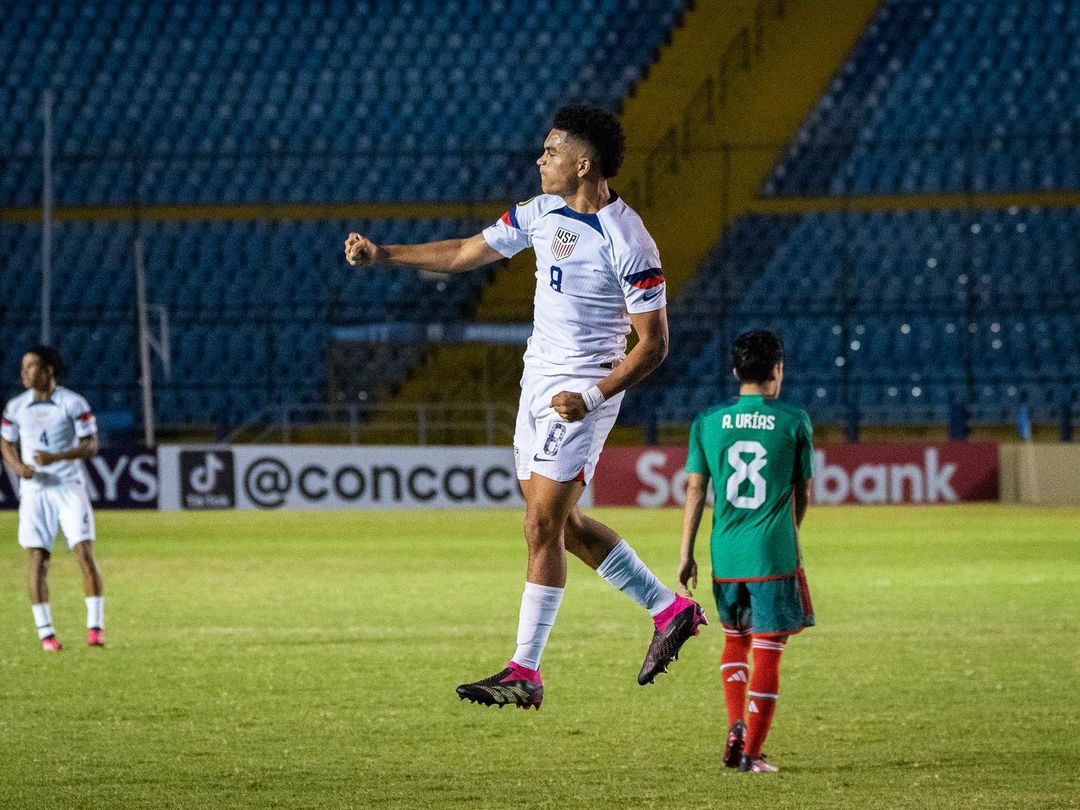
Last weekend, all hope seemed lost for the U.S. Under-17 Men’s National Team in Guatemala City when they trailed Mexico 2-0 in the second half of their regional final clash. But in one moment, faith was restored. A corner kick met the head of 16-year-old Pedro Soma, who towered over the opposing defender, and the ball flew into the net at the back post with impressive power and accuracy. While the Baby Nats couldn’t complete the comeback and ultimately had to settle for a silver medal, Soma was the star of the tournament, and it was something of a coming-out party for the young midfielder from Coconut Creek, Florida.
The son of a Brazilian mother, Pedro already had a soccer ball at his feet by the time he was 18 months old. His love for the sport was passed on directly from his parents, and growing up surrounded by soccer helped him get an early start.
“I started playing soccer when I was one-and-a-half years old,” Soma told us last week in an exclusive interview via video call. “When I was six or seven, I joined a team called Boca United, now called South Florida Football Academy.”
Pedro, or Pedrinho, as he is also known, was born in the suburbs of Boca Raton and spent his early years playing in that city. The rich soccer culture in South Florida created many opportunities to compete against fierce competition, with a number of strong academies located in the area. In October of 2018, though, a new opportunity presented itself.
“There was a student exchange program in Barcelona, so I moved there in 2018,” says Soma. “I played there for two years, and then Cornellà scouted me. I was able to go to Cornellà, and now it is my third season there.”

UE Cornellà is a small third-division club located just a short fifteen-minute drive west of the famous Camp Nou. It is known for its development and has produced players such as Jordi Alba, Keita Baldé, and Victor Ruiz.
“I’m really enjoying it, it’s one of the top teams in Catalunya. It is a great environment there. There are hundreds of teams [in Catalunya], you always play against Barcelona, Espanyol, Girona… Cornellà is always right there with those teams in contention to win the leagues. It’s really exciting to be playing overseas, barely any kids get to do that.”
While very few teenage Americans have the opportunity to hone their skills in Europe before they are 16, the city of Barcelona has the anomaly of currently being home to three talented U.S. youth internationals. In addition to Soma at Cornellà, both Adrian Gill and Diego Kochen are currently playing for FC Barcelona’s famed academy, La Masia. Soma describes Kochen, a fellow Floridian who is now the backup goalkeeper for Barça B, as his best friend and added that having those two other Americans living nearby has been beneficial for him.
Cornellà is not the end goal for the top players that come through the Academy. Its youth system has traditionally served as a feeder for bigger clubs in Cataluyna and adjacent regions. La Liga mainstays like Valencia and Villarreal often look for talent in clubs like Cornellà, in addition to Barcelona-based teams like FC Barcelona and Espanyol. For Pedro, a move to a club like that is the eventual next step.
“Absolutely, that is a great thing that would happen. Right now, I’m focused on the U.S. and Cornellà and getting the best out of every single game.”

Saying that he has made the most of his opportunities would be an understatement. Pedro received his first USYNT call-up last January (with what he called an “unexpected” email) and hasn’t looked back since. He was a standout in his first camp and on a trip to South America in March, which earned him a recall for the UEFA Development Tournament in May. Soma was one of the best players on the field as the U.S. cruised past Belgium 3-0 and then soundly defeated Portugal 2-1.
“Pedro has been exceptional,” says U-17 Men’s National Team head coach Gonzalo Segares. “We’ve seen him grow throughout this whole process; he’s become a role model and a leader of this group, not only with his behavior off the field but also on the field with his professionalism and approach.”
An excellent cycle resulted in a call-up to the CONCACAF U-17 Championship in Guatemala last month. The U.S. coasted through the group stage, defeating Barbados, Trinidad, and Canada, and advanced to the knockout stages. Soma was a rock in the midfield as they defeated the Dominican Republic, Guatemala, and Canada, securing qualification for the U-17 World Cup in Peru later this year. Soma was, by almost all accounts, the standout player of the competition as he showed incredible technical and physical proficiency throughout the U.S.’ run to the final.
Segares added that Pedro is “someone that is very good in aerial duels, good in tackles, very comfortable under pressure… whenever teams decide to press us high, he recognizes where the pressure is coming from, and where he can find our outlets. He had a very strong tournament.”
🇺🇸 @USYNT PULLS ONE BACK IN THE 69TH MINUTE! 🙌 pic.twitter.com/sKoBLeegDz
— FOX Soccer (@FOXSoccer) February 27, 2023
Soma’s defensive prowess and passing range make him a perfect fit for the #6 position in the way the U.S. wants to play, but he is also capable of playing as a #8 slightly further up the field. Pedro says that he views former USMNT captain Michael Bradley as a role model, and alongside Xavi and Iniesta, he outlined Brazil’s Casemiro as one of his favorite players.
“People say that I have the Brazilian Ginga,” Soma said with a smile. “Maybe I was just born with it, I love to play, and it comes out naturally.”
With the CONCACAF Championship now firmly in the rear-view mirror, it’s now back to Cornellà for the rest of 2023, building up to the FIFA U-17 World Cup in the Fall. While the Final in Guatemala didn’t go as hoped, it should be said that the sky is still the limit when the U-17s travel to Peru to compete on the global stage.
“This is a really, really good group,” Soma stated. “There are a lot of top guys who aren’t even with this team [in Guatemala]. We could do some really good stuff in the World Cup… Anything is possible.”

The strength of the 2006 age group that competed in Guatemala last month makes it only more impressive that Soma was able to stand out in the way that he did. For most USMNT fans, it was the first time they were introduced to his game. It almost certainly won’t be the last. Soma will be 20 years old when the senior men’s World Cup comes to the United States in 2026, and he relishes the opportunity to compete for a once-in-a-generation opportunity to play in the world’s most prestigious sporting event on home soil.
“[2026] is an opportunity for us to win it all,” Soma says. “Being there is a goal, it’s an objective. I have three years to work towards that. Every single game matters until that point, I need to give it my all to see if I can make that team.”
Between now and then, there’s lots of work to do. But if Pedrinho continues on his current trajectory, there’s no doubt he’ll be a key part of the bright future that exists for U.S. Soccer in 2026 and beyond.


2022 Ended for the Americans with a painful knockout loss to Holland 3-1. The young team had shown well in the Group stage. While they were unable to close out the Wales match due to a defensive error providing a game-tying penalty, they showed well against England and earned a victory in a must-win over Iran to enter the knockout tournament. The USMNT were the only CONCACAF side to move out of the group stage.
There are a lot of mixed feelings from fans, as many believed this to be the most talented group that the US has brought to a tournament and that the opportunities were available in the Holland match to draw or win that game near the end of regulation. The lack of Brendan Aaronson and Gio Reyna minutes brought a lot of tense feedback from fans.
After the exit, more controversy rose as US Coach Gregg Berhalter’s comments, thought to be off the record, were released about Gio Reyna. Fans mixed feelings about the manager already well documented over the last few years will make for an interesting 2023 as USSF and Berhalter decide what their next steps are.
The young core of this American side will be in their prime in 2026 at home for the next World Cup. They no longer will have to qualify as they host the event. They will lose very few contributors to qualifying or their experience in Qatar as they determine who to include for 2026. This provides a great opportunity to build over the next four years on top of the team’s confidence and core that has developed in a really strong core.
The Chasingacup.com Team
Consistent entries from Patrick Keeler, Chris Kerr, Benton Newman and Nicholas Carr helped keep us updated on happenings and players like Gio Reyna and the upcoming Josh Wynder. The ever-consistent annual entry from Grace Ott was finally rewarded with an MLS CCL finals winner.
Patrick Keeler: https://chasingacup.com/usmnt-unlocked/
Alex Calabrese: https://chasingacup.com/way-too-early-usmnt-2026-fifa-world-cup-roster-projection/
Daniel Smith: https://chasingacup.com/luca-de-la-torre/
Chris Kerr: https://chasingacup.com/pendulum-has-swung/
Tom Byer: https://chasingacup.com/what-is-football-starts-at-home/
Josh Hertz: https://chasingacup.com/3-usmnt-players-set-to-have-a-breakout-season/
Karun Sagar: https://chasingacup.com/ba-vs-liverpool-the-lebron-james-of-soccer/
Chris from Football Report: https://chasingacup.com/jonathan-gomez-in-san-sebastian/
Nicholas Carr: https://chasingacup.com/mls-on-tv-2022/
Grace Ott: https://chasingacup.com/new-faces-familiar-foes-same-goal-a-2022-ccl-preview/
2023
The march begins a new to 2026. The core group now has World Cup experience, they’ve won, and they’ve advanced to the knockout stage. The next step in their development is ahead and it could be as early as December’s transfer window that might have an impact on the USMNT and the upcoming stars who have aspirations to join this group.
The belief continues to grow in this youthful side, and that belief is spreading to the next generation. Those who hope to follow in these great young Americans’ footsteps in the world’s top leagues and top clubs. Can they be the depth to rest some of our players in the group stage that we desperately lacked?
There is much to look forward to as early as next year as the next young Americans’ quest for glory. Merry Christmas and Happy New Year to you and your’s!
MLS
MLS 2022 — American U21 Impact Rankings — Season Wrap Up
Published
2 years agoon
October 12, 2022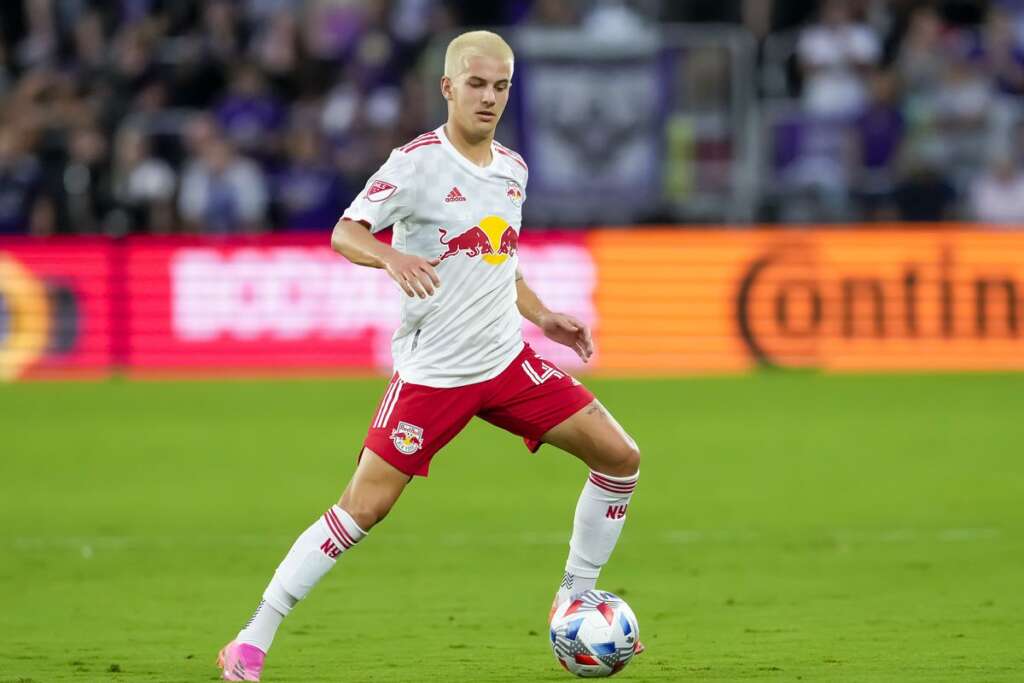
At a high level, this was a down year for high impact American U21s in MLS, especially compared to last year. A lot of the big time prospects moved abroad or had a down year, but there were still some great seasons to highlight and some players that are likely to get a move abroad. Additionally, there are signs that next year we could see a bounceback in impact as there were some emerging performances at the end of the season.
#1 | LB, John Tolkin, New York Red Bulls (2002)
Minutes: 2744
G+: 0.35
G+A / 90: 0.14
xGA / 90: 0.13
Goals: 1
Assists: 3
John takes home the number one spot after an incredibly productive and consistent 2022 season. He was one of the best left-backs in MLS. John was at or near the top of this list the entire season and he was an iron man for the Red Bulls, starting 31 of 34 games and logging over 2700 minutes, good for third most minutes of eligible players behind Gaga Slonina and Leon Flach.
This was John’s second season as a starter and he improved his goal contributions from 2 to 4, logging 1 goal and 3 assists, right in line with his expected numbers. John does not get on the ball as much as other full-backs in different systems, but he has the ball playing ability to play in a more possession heavy system. John finished the year with a positive G+ at 0.35. I was surprised to see that he scored negatively in both dribbling and passing, areas I think he is strong in based on what I see. Perhaps this is due to him not getting on the ball that much? He takes crosses for NYRB and does a good job with them. He is clearly a good passer. He scored positively in fouling, receiving and shooting. He does strike the ball very cleanly.
John has one more year of eligibility on this list and if he stays in the MLS he would be a favorite to top this list again next year. If I had to guess, I would say John is going to get a move abroad in January. I don’t think he has much left to prove in MLS and I think a different system would be good for his development. There is reported interest and I would expect the time is now. On the National team side of things, John seemed close to getting a chance with the USMNT, but ran out of time. With the backup left-back spot still unresolved, John may start getting considerable looks after the World Cup. In the meantime, he is eligible for the U23 Olympic team and is the favorite to start for that group.
#2 | GK, Gaga Slonina, Chicago Fire (2004)
Minutes: 2790
G+: -0.92
GA / 90: 1.41
PSxG +/- /90: +0.04
Clean Sheets: 12
It’s incredibly rare for a 17/18 year old keeper to start at any first team level and play as well as he did. Gaga started 32 of 34 games for Chicago and really only had two spells of poor form, but he was always able to work through it and return to good form.
Gaga was 10th in MLS in post-shot expected goals minus goal allowed per 90, which I believe is the best measure of shot stopping performance. It’s unprecedented that he stopped more goals than expected and ranked in the top third of the league at such a young age. He was also 3rd in the league in clean sheets with 12, only behind the best goalkeeper in MLS, Andre Blake and fellow USMNT player Sean Johnson. He ranked average at claiming, fielding and sweeping and was below average at handling and passing, two areas he’ll need to work on. Shot stopping was by far his greatest strength this season.
Gaga is due to start his career at Chelsea now and it will be very interesting to see what their plan is for him. There is word that Chicago would like to bring him back for another season long loan, but they have another highly talented teenage goalkeeper named Chris Brady that looks ready to take the #1 spot for Chicago. I’d love to see Gaga finish out the season starting for the U21 team and then get a loan in the Championship next season.
Gaga is eligible for both the U20 World Cup in 2023 and the Olympics in 2024 and could be the favorite to start both tournaments if available.
#3 | CM, Leon Flach, Philadelphia Union (2001)
Minutes: 2755
G+: -2.65
G+A / 90: 0.07
xGA / 90: 0.07
Goals: 0
Assists: 2
This was Leon’s second season with Philadelphia and his second as a full-time starter. Leon plays as the left-sided midfielder in a 4-4-2 diamond which means he plays both centrally and floats out wide and while Leon played a ton this year, second most of any eligible player on this list, his G+ was poor and he wasn’t all that effective offensively. Defense is his strong suit and I believe he is played out of position for Philadelphia. He is really a defensive-midfielder, but Philly has one of the best in MLS in Jose Martinez, so he is played out of position.
Leon’s G+ data backs up the eye test. His strongest category is interrupting and it was his only positive category. He graded very poorly in passing, interrupting and shooting. Leon does a ton of the dirty work for Philly and while that does not show up easily in the stat sheet, it is appreciated by manager Jim Curtin. It will be interesting to see what the plan is for Leon next year. Both left-back Kai Wagner and defensive-mid Martinez could be on the move and Leon could be the replacement at either position.
Leon will not be eligible for this list next year. Leon will likely be a fringe player for the U23 Olympic team, but his versatility could get him a few looks.
#4 | RB, Nathan Harriel, Philadelphia Union (2001)
Minutes: 1768
G+: 0.70
G+A / 90: 0.10
xGA / 90: 0.09
Goals: 1
Assists: 1
Nathan was not a player on my radar this season and was not on my preseason top 25 list, but he won the starting RB job for the best team in MLS early in the season, but then lost that job towards the end of the year. Nathan started 20 games and logged over 1700 minutes. Nathan scored his first goal and contributed his first assists of his career this season, right in line with his expected numbers
Nathan’s strengths are as a defensive right-back and he is not as adept at getting involved in the attack and being a super threatening player out wide. Nathan had the highest G+ number of any eligible player, indicating that he was more useful than any other player given the time he received on the pitch. Unsurprisingly, interrupting was his strongest category and receiving was his second highest category, both scoring very positively. Dribbling was Nathan’s worst category.
Nathan is a 2001 and will not be eligible for this list. He will likely be in a position battle again next year and will look to solidify himself as a full-time MLS starter. Nathan is eligible for the U23 Olympic team and will likely get a look as one of the back right-backs behind Joe Scally.
#5 | RB, Tayvon Gray, New York City FC (2002)
Minutes: 1879
G+: -0.24
G+A / 90: 0.05
xGA / 90: 0.10
Goals: 0
Assists: 1
Last year Tayvon Gray got a chance to start at the end of the season after starting right-back Anton Tinnerholm went down with an injury. Tayvon had a chance to retain that job this season and started 22 games. The majority of games that Tayvon missed were due to various injuries, otherwise he was usually in the starting 11. He also played a few games at center-back when that position group was depleted.
Tayvon is a more defensive minded right-back, but did record one assist. He was a bit unlucky because his expected totals were twice as much as his actuals. Tayvon did seem to improve on the ball all while continuing to be an above average defender. Tayvon had a G+ that was slightly negative and his worst categories were passing and receiving. His strongest were fouling and interrupting.
Tayvon would greatly benefit from another year starting at right-back at the MLS level to see if his offensive production can take another step forward. Tayvon will be eligible for this list one more year and will likely be at the top half of this list throughout the year. Tayvon should also get a chance with the U23 Olympic team.
#6 | AM, Brian Gutierrez, Chicago Fire (2003)
Minutes: 1637
G+: -0.53
G+A / 90: 0.38
xGA / 90: 0.34
Goals: 2
Assists: 5
Brian Gutierrez enjoyed a nice breakout season in 2022 starting in 22 games and appearing in all but one game. Brian split time between attacking-mid and outside on the wing. Brian was second amongst all eligible players in goal contributions with 7, 2 goals and 5 assists. Three of these contributions happened in one game where he had a goal and 2 assists. Brian did outperform his expected assist totals pretty considerably, showing a bit of luck.
Brian’s G+ was okay, but not great. The data indicates that he is better playing through the middle of the pitch, not as much out wide, because his receiving and passing numbers are good, but his dribbling and shooting numbers are not as good.
Brian is eligible for both the U20 World Cup in 2023 and the Olympics in 2024. He is certainly a top candidate to make the U20 roster if available and if his development continues at his current rate, he could be in the conversation for the Olympics as well. I hope Brian solidifies himself as a locked-in starter next year. Another step forward would likely see him get a move abroad in January 2024.
#7 | AM, Ben Bender, Charlotte FC (2001)
Minutes: 1645
G+: -1.18
G+A / 90: 0.51
xGA / 90: 0.31
Goals: 3
Assists: 6
Ben Bender was the number one pick in the MLS SuperDraft and one of the surprise players to appear towards the top of this list for the majority of the season. Ben led all U21 American eligible players with 9 goal contributions. Ben started 18 games and accrued over 1600 minutes in a very good rookie campaign, though he did see his role dominish a bit towards the end of the year after Charlotte added some new players to the attack in the summer transfer window.
Digging into the numbers, Ben did get a bit lucky on the assist side of things. His expected assist totals were 2.9 and he ended up with 6. His expected goals were on track with 3.1 and he ended up with 3 goals. He had 8 goal creating actions in total. His G+ wasn’t great at -1.18, struggling most with his dribbling and passing. His progressive passes and attempted passes were on the weaker side, which indicates that he didn’t get on the ball enough and he was not dangerous enough as a passer. This shows why assists can be a very misleading stat. Yes he had 6 but the underlying numbers indicate he was lucky and that he wasn’t a consistently dangerous player on the ball.
Nonetheless, it was a great first professional season for Ben and there are clear areas for improvement. He won’t be eligible for this list next year, but he is eligible for the US U23 Olympic team and is likely a pool player for that squad.
#8 | WING, Cade Cowell, San Jose Earthquakes (2003)
Minutes: 1554
G+: -0.65
G+A / 90: 0.35
xGA / 90: 0.26
Goals: 3
Assists: 3
I was expecting bigger things from Cade Cowell this year. This was his third year as an impact MLS player and the second one with a critical role, but unfortunately this year was more of a step back than a step forward for Cade. He had one more start (15), but less minutes and less goal contributions with 6 this year after 10 in 2021. Once again he outperformed his expected numbers, something we are starting to get used to with Cade.
Cade’s G+ numbers were down this year. What that data tells us is that his dribbling continues to be an area of weakness, relying too much on speed and not enough on skill and feel. His shooting numbers were strong which speaks to his ability to outperform his expected goals. He was also negative in passing and receiving, all of which are technical areas he will need to improve to be an impact player at a higher level. His physical traits will only take him so far.
Cade received a contract extension at the end of 2021 and there has been consistent interest overseas for Cade, but new manager Luchi Gonzalez appears keen to keep him and make him a big part of his plan. My question is whether San Jose is the right environment for Cade to develop. All signs point to no, but it could be one more year in San Jose and MLS before he goes abroad. Cade is still young, eligible for this list for two more years and he will likely be a key player for the 2023 U20 World Cup.
#9 | CB, George Campbell, Atlanta United (2001)
Minutes: 1476
G+: -0.17
G+A / 90: 0.00
xGA / 90: 0.07
Goals: 0
Assists: 0
George, like the majority of the Atlanta United team, had an up and down season. George was the only center-back that finished in the top 25 list. It is a position that typically takes longer to become a starter and because you don’t really sub/rotate center-backs, if you are not starting, you are not playing.
George was playing a lot at the beginning of the season, especially when MIles Robinson went down with a season ending injury, but he was injured in July and never really regained his starting job back. In total he started 16 games and earned just under 1500 minutes.
George’s numbers were solid. He did not have a goal contribution, but he was very courageous and successful in progressing the ball by dribbling and passing, two of his strong suits, though he is still inconsistent as a passer. He makes some elite level passes, but is also prone to poor decision making that leads to dangerous turnovers. Interrupting is another area where he struggled a bit. George is still young for a center-back and may get another chance to win a starting job next year. He graduates from this list next season, but is likely to be a candidate for the US U23 Olympic team.
#10 | LB, Caleb Wiley, Atlanta United (2004)
Previous Ranking: 9
Minutes: 1497
G+: -0.98
G+A / 90: 0.12
xGA / 90: 0.21
Goals: 1
Assists: 1
Caleb Wiley was one of the better stories of the year for me. George Bello left for Germany last winter and Andrew Gutman returned from a season long loan with NYRB. This told me that Caleb would have a small role for Atlanta this year, but I wasn’t sure how big of a role he was ready for. It turns out he had a big role, in large part due to injuries, but also due to his development and ability. It was an up and down year for Caleb, but that is expected. He is a young 2004, playing at the age of 17 the entire year, making him one of the youngest players on this list. Caleb played as left-back, left wing-back and a left-winger, showing his versatility.
Caleb had a goal and an assist, but his underlying numbers showed he was a bit unlucky to not have more. He had 1.4 expected goals and 2.1 expected assists. Caleb struggled towards the end of the year and his G+ accounted for that. It ended at a not so great -0.98. His passing was the biggest problem area, specifically I saw a lot of inconsistency with his crossing. His interrupting grade was excellent, showing his defensive ability. He is a pretty well rounded full-back that is only going to continue to get better.
Caleb will likely have a part-time starting role next year assuming Gutman is back and healthy, but I am excited to see his development. He is eligible for this list for three more years though I would be surprised if he is in the MLS for three more years. I could see him making the move abroad in 2 years or less if he continues to progress. Caleb is my favorite to be the starting left-back for the 2023 U20 World Cup and he could be in play for the Olympics as well.
#11 | DM, Aidan Morris, Columbus Crew (2001)
Minutes: 1811
G+: -2.09
G+A / 90: 0.00
xGA / 90: 0.05
Goals: 0
Assists: 0
It was great to see Aidan Morris back on the pitch for the Crew. After a promising 2020 season and a great performance in the MLS Cup, we lost Aidan for all of 2021. He returned from his injury and took a little while to get back in the groove, but whenever I watched him I thought he played well. He was just as explosive and as aggressive as he was before the injury. Aidan is the prototypical sweeper/destroyer 6 in the mold of a Tyler Adams type. Aidan’s above the line and below the line stats are not impressive, but when you watch him you can see how he positively impacts the game. Perhaps the best data point to showcase this is that Columbus only lost one game that Aidan Morris started. That is a pretty incredible stat considering they did not make the playoffs.
Aidan did not have a goal or an assist and his expected numbers were low as well. Aidan’s G+ was not great, but I have found that most defensive midfielder’s G+ in MLS aren’t usually too impressive. Aidan’s dribbling, passing and receiving were all quite low and his interrupting was much lower than I would have expected it to be.
Aidan is a 2001 born player and is graduating from this list next year. I expect Aidan to be one of the defensive-midfielders in the mix for the Olympic 2024 team and a step forward in 2023 could start creating interest from abroad.
#12 | AM, Bryce Duke, Inter Miami (2001)
Minutes: 1478
G+: -1.23
G+A / 90: 0.30
xGA / 90: 0.25
Goals: 1
Assists: 4
Bryce Duke moved from LAFC to Inter Miami this year and that move proved to be a good one for his career. Bryce never got much of an opportunity in LA, but did have a decent role for the playoff bound IMCF. Bryce started out the year with a knock, but ended up starting 16 games and appeared in 28. Bryce played as a 8, 10 and winger.
Bryce had 1 goal and 4 assists on the year and his expected goals and assist totals were slightly lower than his actuals. Bryce had a low G+ and his dribbling was his biggest weakness. What is interesting is that Bryce does have the ability to make highlight carries and passes, but he is far too inconsistent and his decision making can be poor. If he can become more consistent I think those numbers would really improve because the technical ability is there.
This is Bryce’s last year of eligibility on this list and he is likely a fringe player for the 2024 Olympic player pool.
#13 | CM, Cameron Duke, Sporting Kansas City (2001)
Minutes: 1227
G+: -0.70
G+A / 90: 0.15
xGA / 90: 0.24
Goals: 0
Assists: 2
Cameron saw the most playing time of his young professional career this season, starting 13 times and earning just over 1200 minutes. He saw the majority of his time as a central-midfielder, though he also played a little bit at right-back. Cameron had zero goals and two assists, though he was a little unlucky in that his xGA/90 was 10 points higher than his actuals. He had 1.6 expected goals, but did not cash in on any. His G+ wasn’t great at -0.70 on the season and the areas he struggled the most were interrupting (-0.43) and passing (-0.62), both of which are key areas for an all-action midfielder. His strongest area was dribbling (0.19).
Cameron looks to have a ceiling of a fringe-starter / impact sub at the MLS level. He graduates from this list this year and is unlikely to be at the top of the pool for the U23 Olympic team, though injuries and availability could change that. His versatility as a CM/RB is useful.
#14 | GK, Rocco Rios Novo, Atlanta United (2002)
Minutes: 1395
G+: -4.63
GA / 90: 1.57
PSxG +/- /90: -0.28
Clean Sheets: 2
Rocco Rios Novo was loaned to Atlanta midway through the year after Brad Guzan went down with a season and potentially career ending injury. Rocco transferred in from Argentinian Club, Lanus. Rocco started 15 games for Atlanta and in large part struggled, specifically as a shot stopper. Rocco has below average size, but above average ball playing skills, but the shot stopping was a big problem. He had some nice moments, but overall it was a tough season for Rocco and I would not expect him back in Atlanta next year.
Rocco had two clean sheets and gave up -0.28 more goals than expected per 90, showcasing those shot stopping struggles. His G+ was -4.88 and that grading system reiterated the shot stopping struggles while also highlighting that he was decent in all other categories, but at the end of the day, you have to make saves.
#15 | CM, Jack McGlynn, Philadelphia Union (2003)
Minutes: 1018
G+: 0.68
G+A / 90: 0.35
xGA / 90: 0.22
Goals: 1
Assists: 3
I would say Jack McGlynn had a breakout-lite season. After a really strong Concacaf U20 Championship, he really picked up steam with the Philadelphia Union and had the best season of their talented young core. Jack started 9 games, all of which were in the second half of the season and he appeared in 23. I am excited to see how he is used in the playoffs.
Jack had one goal and three assists on the season, outrunning his expected totals by a pretty considerable margin, but his G+ numbers were very good. He had the highest G+ of any eligible player on this list behind teammate Nathan Harriel and he did it with almost half of Nathan’s minutes. He was particularly strong as a passer and if you have ever watched Jack play, that should come as no surprise, he is an elite passer. His interrupting grade was surprisingly mediocre, which I expected to be worse, showing that the system likely masks some of those deficiencies. Receiving was his worst grade which speaks to his need to become a little tidier in tight spaces.
It’s possible that Jack makes a move abroad this winter as there are many suitors, but I think another half year or full year in MLS would help prepare him more for that move, especially if he can earn a full-time starting job next season. Jack will be a key player for the 2023 U20 World Cup and if he takes a step or two forward, could be a good option for the 2024 Olympic team.
#16 | WING, Indiana Vassilev, Inter Miami (2001)
Minutes: 1059
G+: 0.41
G+A / 90: 0.17
xGA / 90: 0.23
Goals: 2
Assists: 0
Indiana Vassilev returned to Miami from Aston Villa for the second season in a row on a season long loan. Indiana started 13 games and appeared in 24. He had a better stint with IMCF than last year and had one shining moment where he scored two late goals, his only two goals on the season to give Miami the win. Indiana had a strong G+, one of the few players to end the year on the positive side and he was particularly solid as a dribbler.
Even if Indiana comes back to the MLS he won’t be eligible for this list next year and I do not expect him to be in the plans for the 2024 Olympic team.
#17 | DM, Sebastian Berhalter, Vancouver Whitecaps (2001)
Minutes: 1023
G+: 0.32
G+A / 90: 0.00
xGA / 90: 0.05
Goals: 0
Assists: 0
Sebastian is the son of USMNT coach Gregg Berhalter. Sebastian was traded to Vancouver before the start of the season and a consistent starter for the majority of the season until an injury forced him to miss about half of the season. In total, Sebastian started 11 games and collected just over 1000 minutes.
Sebastian isn’t a flashy player, but does a lot of the dirty work in the midfield to help his team. Sebastian did not have a goal contribution and only 0.5 expected goals and 0.3 expected assists. Sebastian did end the season with a positive G+ of 0.32, one of the few players to end the year with a positive G+. The biggest reason for the positive number was his interrupting number of +.42 which is quite good. Defensively is definitely where Sebastian shined this year. His worst category was passing.
Sebastian is a 2001, so he is not eligible for this list next year.
#18 | DM, Danny Leyva, Seattle Sounders (2003)
Minutes: 951
G+: -0.27
G+A / 90: 0.09
xGA / 90: 0.08
Goals: 0
Assists: 1
Danny was surpassed in the depth chart at the beginning of the year by Obed Vargas, but when Joao Paulo and Vargas went down with injury, Leyva stepped up and played pretty well in a bigger role in the second half of the season. He ended up with 12 starts and 19 appearances, adding one assist on the season.
Danny’s G+ ended up being pretty solid, slightly negative and scoring best in interrupting and worst in receiving. I find the interrupting data point interesting because many believe he is a weak defender, but I think it is an area he has improved a lot in.
Danny is a 2003 and thus eligible for the 2023 U20 World Cup. It is hard to say if Danny is out of favor with Mikey Varas, the manager of that team, or if he just hasn’t been available, but he hasn’t been with the group for quite some time. It would seem that Mikey prefers others, but I think Leyva can help this group and provide some stability and distribution to the midfield. It’s been reported that he is getting his Mexican eligibility together as well.
#19 | RB, Kayden Pierre, Sporting KC (2003)
Minutes: 953
G+: -0.41
G+A / 90: 0.09
xGA / 90: 0.04
Goals: 0
Assists: 1
Kayden Pierre was one of the most noticeably improved American U21 players in my eyes this year. He went from being a very fringe prospect to potentially the best U20 right-back in the US pool. He didn’t get an opportunity until midway through the season when Graham Zusi went down with an injury, but he played really well covering for Graham in the middle part of the season where he started 9 times and appeared 19 times overall.
Kayden didn’t create a ton of opportunities, but was strong defensively and added his first career assist. Kayden’s G+ was okay, not great, just slightly negative. He was strongest in dribbling and interrupting and weakest in receiving.
As I said above, I think Kayden and Justin Che are the two best right-back options for the U20 group, but he has not been with the group in a while. I think Kayden is a different player from the last time he appeared for the U20s and I would love to see him get another opportunity. Hopefully next year Kayden gets a chance to be the full-time starter for Sporting KC next as Graham Zusi ages out and is out of contract at the end of this year.
#20 | DM, Daniel Edelman, NYRB (2003)
Minutes: 993
G+: –0.83
G+A / 90: 0.09
xGA / 90: 0.06
Goals: 1
Assists: 0
Daniel Edelman had a solid first pro season for NYRB and ended up having a bigger role than many, including myself, thought he would this year. The midfield was a revolving door and Edelman ended up being a consistent starter at the end of the year. He ended with 10 starts and appeared in 16 games total. Danny is more of a sweeper/destroyer 6 like Aidan Morris, so he doesn’t get involved a ton on the offensive side of things, but he did score his first career goal and has some good shots on goal.
Edelman’s G+ wasn’t great, ending at -0.83. He struggled the most at receiving and interrupting. I go back to my point about Aidan Morris. Defensive minded midfielders tend not to score well with G+.
Danny is a 2003 and a core player for the U20 team. He looks to be the preferred 6 for Mikey Varas in the most important games. It also looks like Danny might get a chance to be the full-time starter for NYRB next year.
#21 | WING, Cameron Harper, NYRB (2001)
Minutes: 765
G+: 0.52
G+A / 90: 0.47
xGA / 90: 0.30
Goals: 2
Assists: 2
I had Cameron on my preseason top 25 list and a few people laughed at me, but I had seen flashes of potential in the past and thought this was the year he might start to make an impact. For the most part I think I got that right. Cameron received 6 starts and 745 minutes, but started the year off injured and finished the year injured, so he didn’t get as much of an opportunity as he could have.
Cameron had an impressive goals and assists per 90 average of 0.47, with 2 goals and 2 assists. He was lucky as his expected goals were at 1.1 and his expected assists were at 1.5. Overall Cameron had a really strong G+ at 0.52, scoring positively in dribbling, interrupting and passing. His receiving grade was where he had the most room for improvement.
Cameron is another 2001 which means he will not be eligible for this list. I also do not think Cameron will be a key player for the U23 Olympic team, as I think other wingers will likely be higher on the depth chart.
#22 | CM, Obed Vargas, Seattle Sounders (2005)
Minutes: 851
G+: -0.81
G+A / 90: 0.00
xGA / 90: 0.06
Goals: 0
Assists: 0
Obed Vargas was one of the bigger young American stories in MLS at the beginning of the year. He had surpassed Josh Atencio and Danny Leyva in the midfield and had some impressive performances in both MLS and in the Concacaf Champions League championship run. He was the first player born in 2005 to really start to breakout in the MLS. Unfortunately Obed’s season was cut short due to lingering back issues that Seattle was rightfully very careful about. Hopefully a full offseason can help Obed get back to fitness and he continues to shine next season.
Obed played a hybrid 6/8 role for Seattle as one of the two midfielders in a 4-2-3-1 setup. Obed isn’t a flash player, but one that does a lot of the little things well to help control the midfield. Obed did not have any goal contributions in just over 800 minutes and 10 starts. His G+ was not great at that time, but he showed flashes, which is all that you are looking for in a super young player like Obed. He had positive marks for dribbling and fouling, but was negative in Interrupting, passing, receiving and shooting. Passing was his worst category and after digging into the numbers it appeared he was very safe and lacked danger with his passing.
Hopefully Obed can build off his early success and show improvement next season. He was one of the few 2005s getting time with the US U20s and he will attempt to get back into that mix ahead of the 2023 U20 World Cup.
#23 | CM, Owen Wolff, Austin FC (2004)
Minutes: 913
G+: -1.60
G+A / 90: 0.10
xGA / 90: 0.23
Goals: 0
Assists: 1
Owen was a surprise player for me this year. I did not expect him to have as big of a role as he did with Austin. He didn’t have a huge impact, but he didn’t look out of place either. He had a good run of starts in the middle of the year and totaled 11 for the year and 24 appearances in total.
Owen was a bit unlucky in that his expected goals and assists were twice what he actually tallied. He set up some big chances but did not have his teammates finish in many of those instances. Owen finished with a pretty poor G+ I think mainly because he struggled to really impact the game when he was on the pitch. He was poor in most categories other than fouling with dribbling being his worst category.
Owen is a young 2004 and played all year as a 17 year old, one of the few 2004s with a key role for a winning club. Owen has not yet played with the United States U20s, but has been a key player for the U19s. I am not sure he is going to get an opportunity with the U20s before the World Cup, but if he comes out next year with a bigger role for Austin and a hot start, he could force his way into the picture.
#24 | WING, Jackson Hopkins, DC United (2004)
Minutes: 904
G+: -1.77
G+A / 90: 0.10
xGA / 90: 0.23
Goals: 0
Assists: 1
Jackson was one of three in-season homegrown signings for DC United and the one who received the most playing time. I was surprised that Jackson received as much of an opportunity as he did as I do not rate Jackson super high, but he clearly built trust with the coaching staff and must train very well. Jackson started 11 times and appeared in 21 games. He tallied his first assist on a nice set piece cross in. Jackson had a poor G+ which mirrored what my eyes saw when I watched him play. He didn’t seem ready or deserving of the role he was given this year. Interrupting and receiving were two particularly bad categories for him.
Jackson is another 2004 and a surprise player for me on the list. There must be something I am missing about Jackson. Rooney seems to rate him as he has been given more of an opportunity than other young DC players I rate higher and he keeps getting calls to the United States U20s even though he continually looks like one of the weaker players. In the end I don’t expect him to make the 2023 U20 World Cup, but he seems to keep getting opportunities, so who knows?
#25 | GK, John Pulskamp, Sporting KC (2001)
Minutes: 1028
G+: -3.21
GA / 90: 1.58
PSxG +/- /90: -0.09
Clean Sheets: 3
John Pulskamp is the third goalkeeper on this list. John started 11 games this year after Tim Melia had a very poor start to the season. Sporting KCs turnaround at the end of the year coincided with John starting to play better in goal. John’s underlying numbers weren’t great, but he really started to improve towards the end of the year.
John had a negative post-shot expected goals minus goals conceded and his G+ was -3.21, not great. Shot stopping was the main problem area for John. John will likely get every opportunity to win the starting job next year, but he won’t be eligible for this list. John will also be in the keeper pool for the U23 Olympic team.
Honorable Mentions
Justin Haak, Matko Miljevic, Josh Atencio, Caden Clark, Paxten Aaronson, Serge Ngoma
Statistical sources
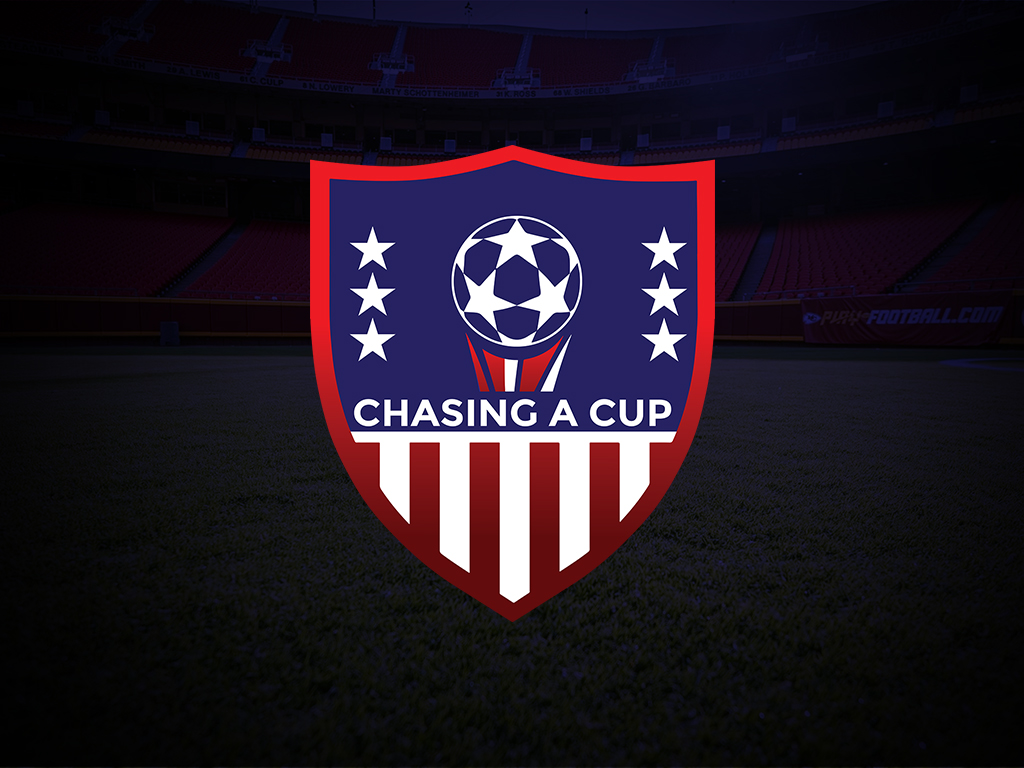
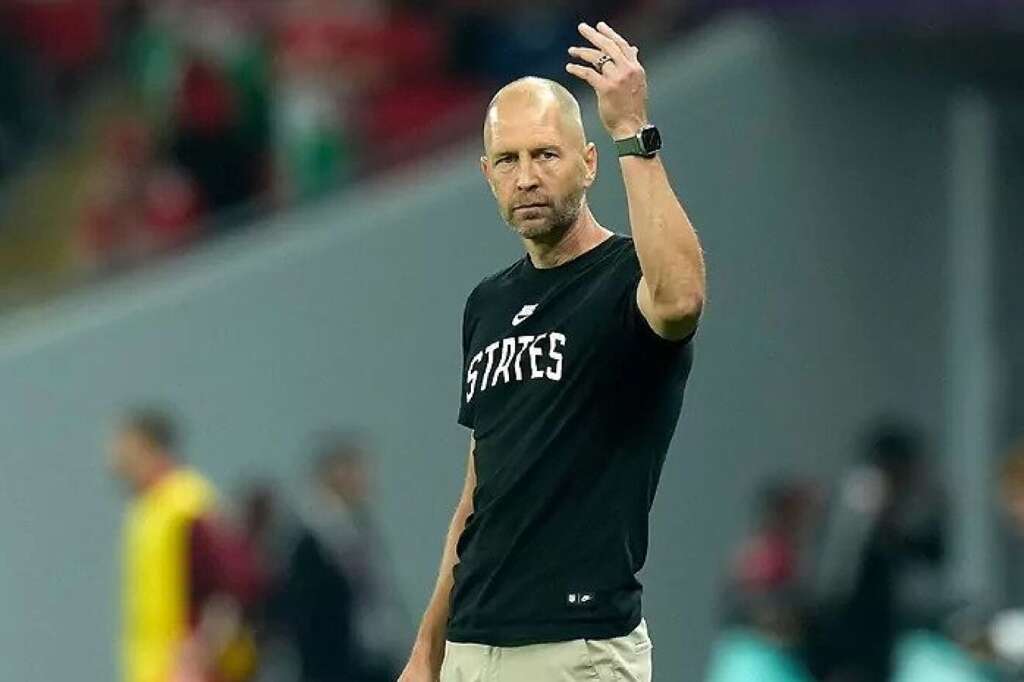
Gregg Berhalter’s Legacy

What’s in a Resume?

Scheduling Conflict

Trending
-

 USMNT5 months ago
USMNT5 months agoUSMNT Kits Come in Different Styles and Colors
-

 Club News4 years ago
Club News4 years agoJulian Vincente Araujo
-

 USMNT3 months ago
USMNT3 months agoIs the MLS Specifically Targeting Expansion to USL Cities?
-

 USMNT2 years ago
USMNT2 years agoGROUPED OR GLORY: Group A
-
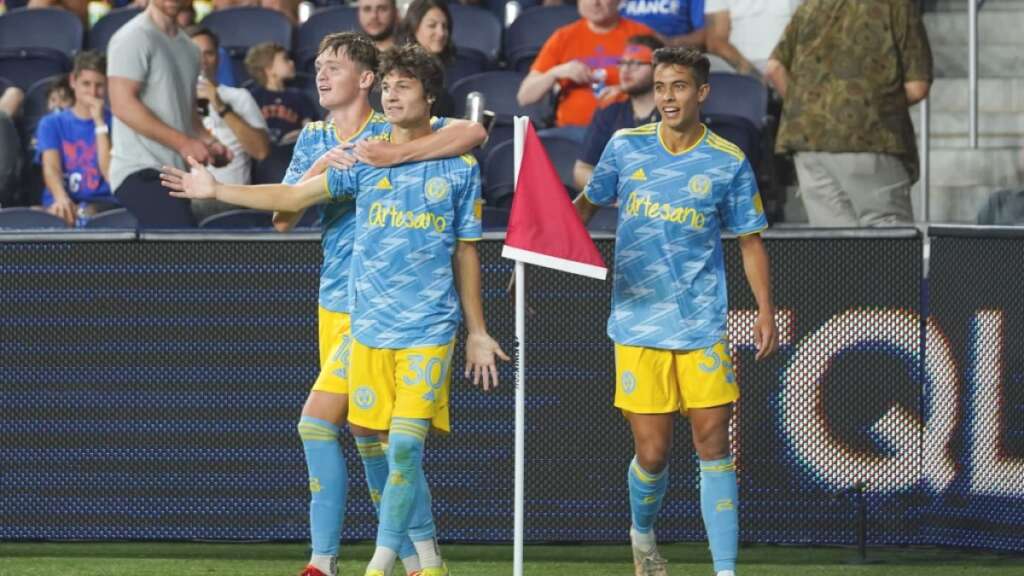
 MLS2 years ago
MLS2 years ago2022 Youth Series: MLS Club Youth Talent Rankings
-

 USMNT4 years ago
USMNT4 years agoA Hidden Gem: Barça Residency Academy
-
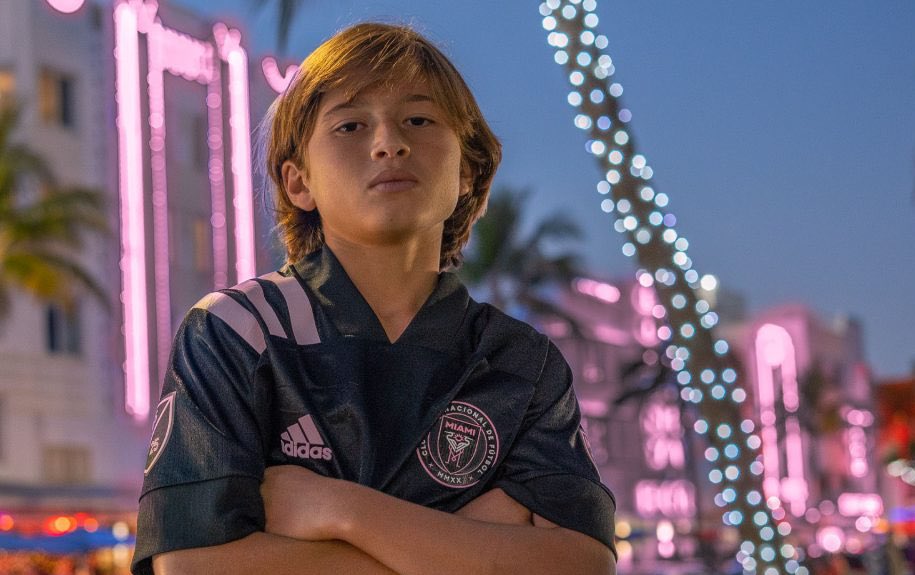
 Youth2 years ago
Youth2 years ago2022 Youth Series: Top 20 Born In 2007
-

 Club News4 years ago
Club News4 years agoRanking the top 50 American under 20 talents

